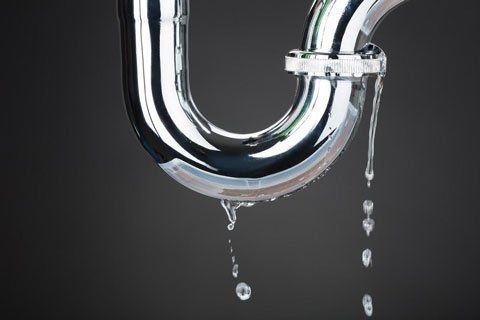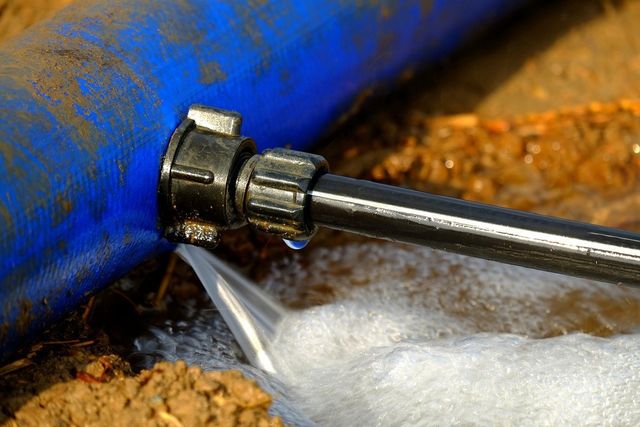Do you find yourself interested in insight around Leaking water lines?

Early discovery of dripping water lines can reduce a prospective catastrophe. Some small water leaks might not be noticeable.
1. Examine the Water Meter
Every residence has a water meter. Inspecting it is a proven way that helps you uncover leaks. For beginners, shut off all the water resources. Make sure no person will purge, make use of the faucet, shower, run the cleaning maker or dishwasher. From there, most likely to the meter and also watch if it will alter. Since no person is utilizing it, there must be no motions. If it moves, that shows a fast-moving leak. Furthermore, if you spot no changes, wait an hour or 2 and check back once again. This implies you may have a sluggish leak that might even be underground.
2. Check Water Consumption
Examine your water costs and track your water intake. As the one paying it, you should notice if there are any kind of discrepancies. If you spot sudden changes, in spite of your usage being the same, it suggests that you have leaks in your plumbing system. Keep in mind, your water expense ought to fall under the exact same range monthly. An unexpected spike in your expense shows a fast-moving leakage.
A steady increase every month, even with the same behaviors, reveals you have a sluggish leakage that's likewise slowly intensifying. Call a plumber to completely examine your home, particularly if you feel a warm location on your flooring with piping underneath.
3. Do a Food Coloring Examination
30% comes from toilets when it comes to water intake. Examination to see if they are running properly. Decline flecks of food shade in the storage tank and also wait 10 minutes. If the shade in some way infiltrates your dish throughout that time without flushing, there's a leakage in between the container and also dish.
4. Asses Outside Lines
Don't forget to inspect your outside water lines also. Needs to water leak out of the link, you have a loosened rubber gasket. One little leakage can lose heaps of water and also increase your water expense.
5. Examine the circumstance as well as inspect
Home owners must make it a habit to check under the sink counters and also inside cupboards for any kind of bad odor or mold growth. These two warnings suggest a leakage so timely interest is required. Doing routine assessments, also bi-annually, can conserve you from a significant issue.
If you recognize your house is already old, maintain a watchful eye on your heating systems, hose pipes, pipes etc. Check for stainings as well as deteriorating as a lot of appliances as well as pipelines have a life expectancy. They will likewise naturally degrade as a result of tear as well as use. Do not wait for it to rise if you think dripping water lines in your plumbing system. Call a specialist plumber as soon as possible so you do not end up with a dreadful mess in your house.
Early discovery of dripping water lines can reduce a possible disaster. Some small water leaks might not be noticeable. Inspecting it is a surefire way that assists you find leaks. One tiny leakage can squander heaps of water and also spike your water costs.
If you suspect dripping water lines in your plumbing system, don't wait for it to escalate.
WARNING SIGNS OF WATER LEAKAGE BEHIND THE WALL
PERSISTENT MUSTY ODORS
As water slowly drips from a leaky pipe inside the wall, flooring and sheetrock stay damp and develop an odor similar to wet cardboard. It generates a musty smell that can help you find hidden leaks.
MOLD IN UNUSUAL AREAS
Mold usually grows in wet areas like kitchens, baths and laundry rooms. If you spot the stuff on walls or baseboards in other rooms of the house, it’s a good indicator of undetected water leaks.
STAINS THAT GROW
When mold thrives around a leaky pipe, it sometimes takes hold on the inside surface of the affected wall. A growing stain on otherwise clean sheetrock is often your sign of a hidden plumbing problem.
PEELING OR BUBBLING WALLPAPER / PAINT
This clue is easy to miss in rooms that don’t get much use. When you see wallpaper separating along seams or paint bubbling or flaking off the wall, blame sheetrock that stays wet because of an undetected leak.
BUCKLED CEILINGS AND STAINED FLOORS
If ceilings or floors in bathrooms, kitchens or laundry areas develop structural problems, don’t rule out constant damp inside the walls. Wet sheetrock can affect adjacent framing, flooring and ceilings.
https://www.servicemasterbyzaba.com/blog/how-to-detect-water-leakage-in-walls/

Do you like reading about Finding hidden leaks? Place feedback below. We would be interested to see your insights about this blog. We are looking forward that you come back again in the future. Appreciated our piece? Please share it. Let others check it out. Thank-you for taking the time to read it.
Comments on “Just how to Examine If Your Residence Has a Hidden Leak”